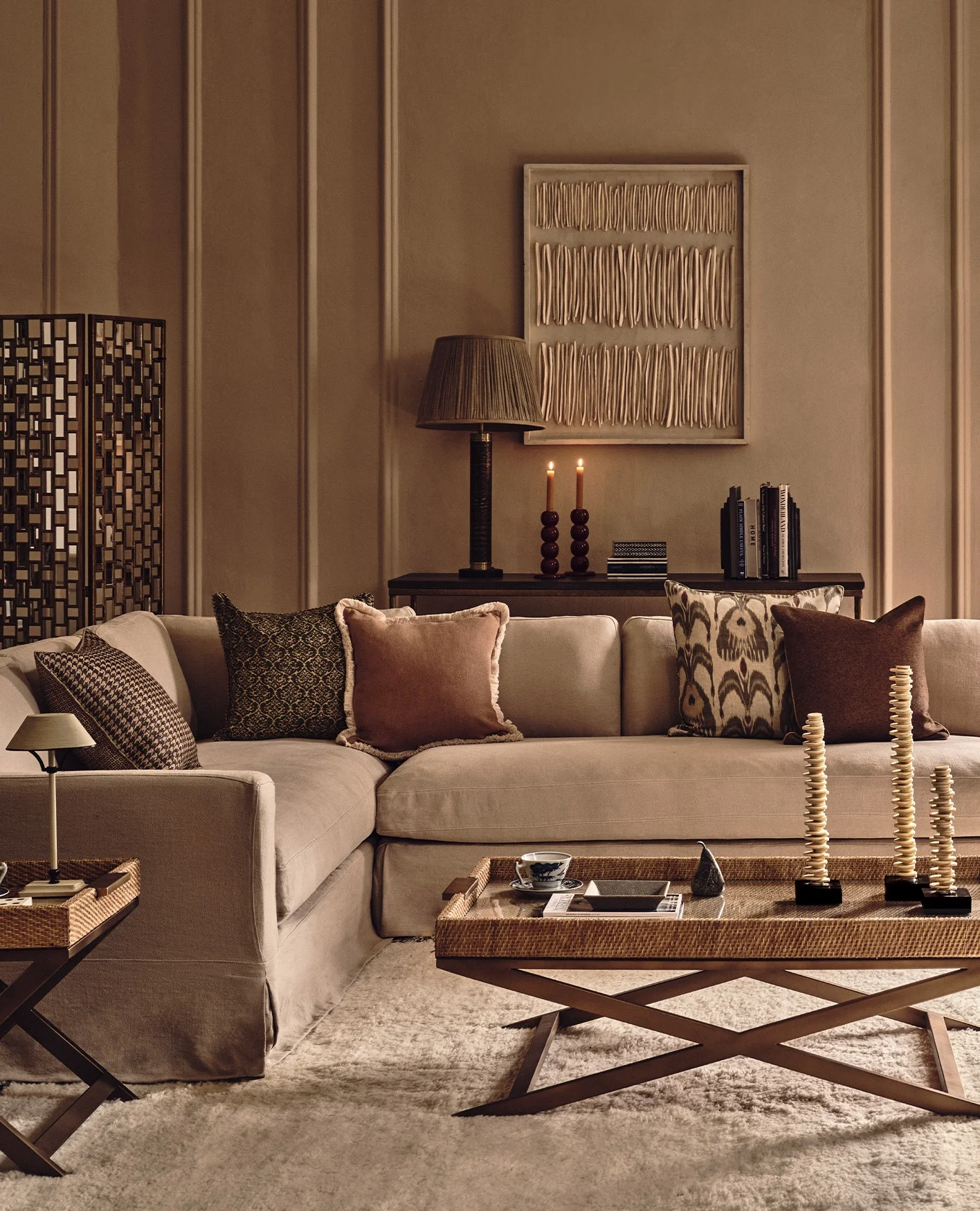Get the Look: Considered Elegance

Achieving simplicity in design is, funnily enough, no simple task. French novelist Amantine Dupin – best known by her pen name George Sand – declared that it is “the last limit of experience and the last effort of genius”. For our latest look, our team have succeeded in creating a space that appears effortlessly elegant but also carefully curated. Read on to find our tips and tricks if you are interested in how to accomplish this look.
Draw Attention to Property Features
In all interior design endeavours, you should start by considering the space that you’re overhauling. Both old and new properties will have their own features and it’s worth embracing those when making your furniture choices so that they feel at one with the house – less like a set, and more like they have always belonged. Panelling is a particularly lovely period feature and a hallmark of elegance and sophistication that can work as a frame for your decoration, but if your house is not blessed with it, it’s also possible to create your own moulding with a little DIY.
Consider Symmetry
Whether your property has its own natural symmetry, or is more of the higgledy-piggledy variety, you can bring your own symmetry to rooms through the placement of your furniture. It’s not often advised to display things in pairs in design – threes being the preference for a more cohesive look – but this rule can be sidestepped when it comes to accomplishing refinery. A pair of armchairs in matching hues, or two side tables to sit either side of a bed – these things act in the way of a frame to a piece of art.


Less is More
Continuing on the theme of placement, where you position your furniture can also impact on the design aesthetic of your home. When it comes to elegance, go for quality over quantity. Choose pieces with inherent character that will add interest, rather than a suite of matching pieces. Think about placing them centrally rather than up against walls so that you can draw attention to them, and go big, but minimal. In other words, invest in that large dining table, put it in the centre of your room, and keep the focus there rather than overcrowding the room with other pieces that will make it look cluttered. One way to do this is to hang lighting above the table that pulls the eye inwards and downwards.


Go for Simple but Thoughtful Colour Choices
Colour is a matter of personal taste, but to achieve casual opulence, we advise thoughtful, muted choices that don’t shout but whisper, marrying together each element in your room. Instead of pure white, which can appear cold and modern, try soft neutrals such as an off white, taupe or cream which will showcase your design prowess: white is the easy choice, off white is the designer’s choice. Alongside those, embrace warm browns and rusty hues and offset with minimal accents of black that help to bring these more hushed tones to the fore.
Choose Patterns and Materials Carefully
Matching colours gives you the freedom to mismatch patterns, as the colour is your uniformity and the pattern is your feature of interest – take the cushions in this look as an example. Their patterns differ, yet they have been paired for their similar ikat design styles and the Tabac colourway. This technique of contrasting prints shows a more considered approach to your choices as there is a clearer thought process behind each piece. In terms of materials, think warm textures such as wool, which will also bring a sense of timelessness to your scheme.


Hang Large Wall Art and Mirrors
Bare walls can make a space feel empty and unloved, so we recommend using them as a canvas. For a clean look, rather than creating a gallery wall of lots of artwork, we advise choosing one or two large pieces wisely that will be the main focus. These should be authentic to you and your home, and sometimes that takes time to find. Building a look over time is part of the pleasure of curating your home. Mirrors can also be used in place of artwork to create a light flow throughout your room, making it feel bigger and airier. An ornate frame will make your mirror just as eye-catching as a piece of wall art.
Zone Spaces and Create Moods with Lighting
We like to suggest placing table lamps and floor lamps around your room so that you can create deliberate ambience rather than switching on your overhead lighting. It can be used to add some drama to an otherwise simple look; in this room, much of the lighting is dark and sculptural, then paired with lighter shades to warm them up and throw light around the room. Don’t forget the power of candlelight, which can also provide a welcome glow for a peaceful atmosphere.


Consider the Finishing Touches
Though with furniture we advise to go big and minimal, that doesn’t mean you should hold back from placing decorative finishing touches on surfaces for added interest. If you prefer to refrain from cluttering your coffee table, use shelving to display books and ornaments. Many of the ornaments here are crafted from natural materials in bone, stone and rattan which brings an extra level of sophistication. These pieces can be equally practical if you opt for pretty storage boxes that can hide away odds and ends. To adhere to the present season, swap in floral bouquets, perhaps some burgundy eucalyptus stems for the autumn, or tea roses for spring. If you go faux, then that’s one less thing to think about every time the new year rolls around. Layer soft furnishings too for added texture: rugs instantly warm and soften hard floors, while throws make your sofa that bit more inviting.
